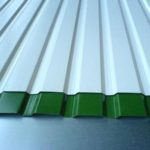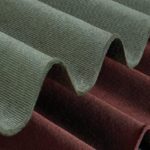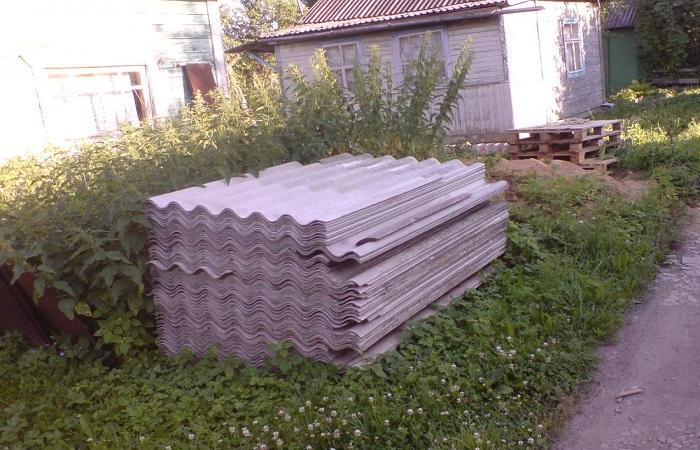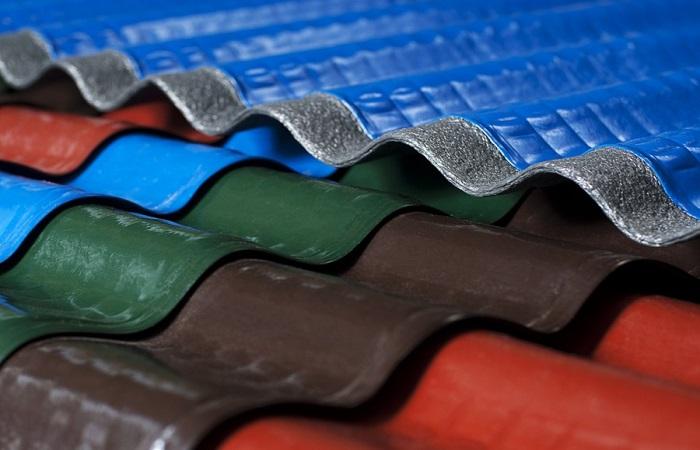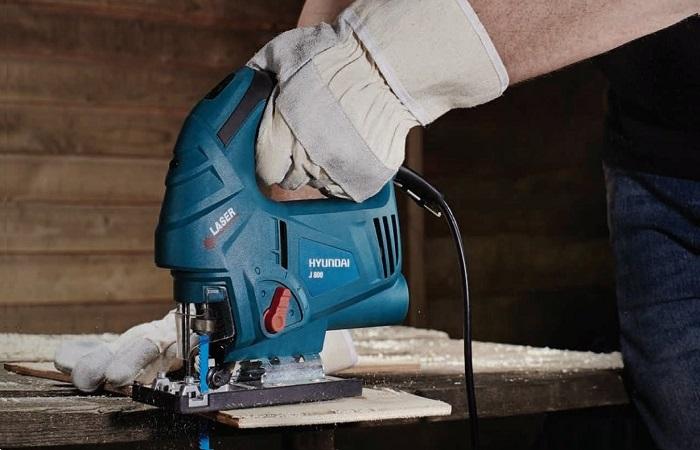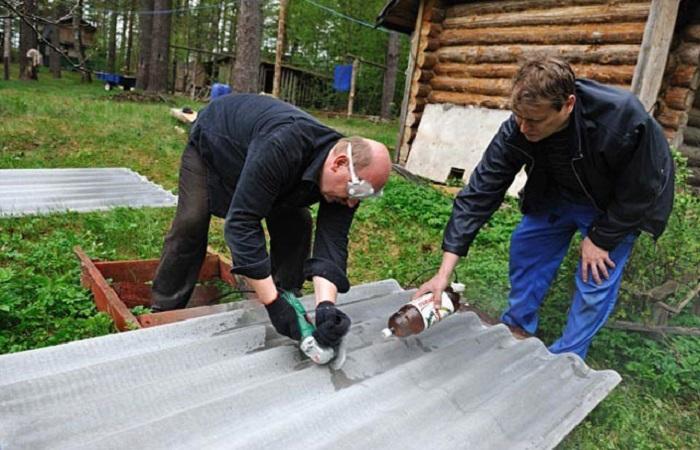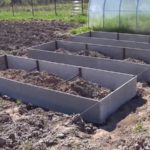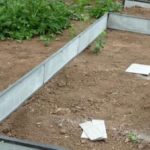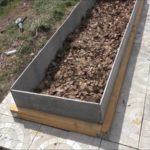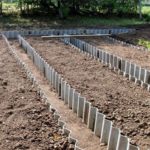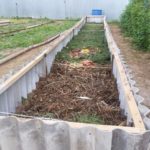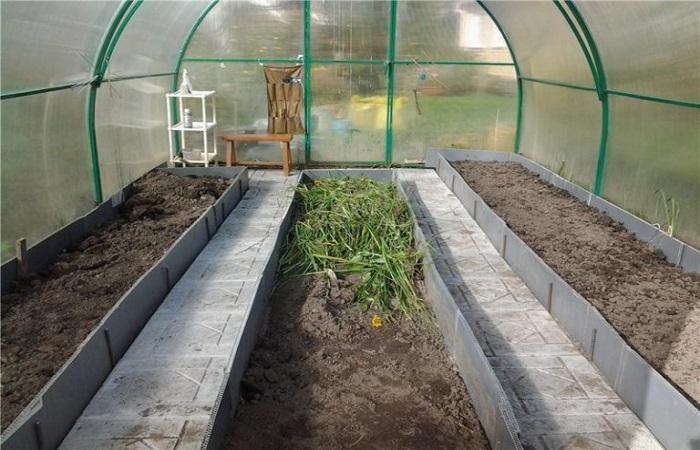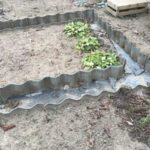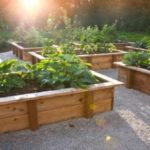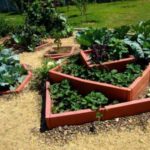Creating slate beds allows you to retain soil in a specific area. At the same time, they look very attractive. To build such structures it is not necessary to use new materials. The slate left over after replacing the roof is quite suitable for this. This material is durable. Even when in contact with organic substances, it retains its characteristics.
- Is it possible to fence beds with slate?
- Advantages and disadvantages
- Slate selection
- Manufacturing instructions
- Required tools and materials
- Height and dimensions
- Slate slicing
- Features of making high beds
- From flat slate
- Made from corrugated slate
- Specifics of slate beds in a greenhouse
- Warm beds
- Rules of care
Is it possible to fence beds with slate?
Slate beds are made quite often. This sheet material is convenient to cut into fragments and install. Moreover, the influence of slate on the garden depends on its composition.
There are several types of material:
- Asbestos-cement - includes 10% asbestos and 85% cement. In its pure form, asbestos poses a great health hazard. However, in combination with cement it is significantly reduced.
- Metal - includes a composition based on steel and aluminum. Its surface is covered with a polymer material. Its disadvantage is the risk of rust due to constant contact with wet soil.
- Ondulin has a wavy shape and resembles roofing material in composition. It does not deteriorate under the influence of water. However, very flexible sheets quickly lose their shape under the influence of the weight of the soil. The material is used as a border.
- Made from PVC - the material is perfect for garden beds. Plastic is resistant to water, characterized by strength and flexibility. To create attractive beds, you should use multi-colored polycarbonate.
To increase the service life of slate, its sheets should be painted on both sides. To design beds, it is not recommended to use damaged materials that have cracks or chips.
The disadvantage of slate is considered to be strong heating under the influence of sunlight. As a result, the soil near the sides quickly dries out. Therefore, in the summer it is recommended to systematically water the plants.
Advantages and disadvantages
The advantages of this type of material include the following:
- High degree of strength. When properly fastened, the material does not deform under the weight of the soil. Therefore, it can be used to create fences for very long beds.
- Affordable price.
- Long period of operation.
- Attractive appearance.
- Ease of processing beds.
- Variety of shapes and profiles.
However, the material also has certain disadvantages:
- Fragility. The material must be installed carefully to avoid damage.
- Intense heat. To avoid drying out of the soil, the soil will have to be constantly watered.
- The need to use support from pegs or construct a frame. If this is not done, the sides may bow and move under the weight of the soil.
Slate selection
Slate can be flat or wavy. Moreover, the first type is considered less reliable than the second. Straight sheets can have the following types:
- unpressed;
- pressed.
For the construction of beds, flat slate, which is of the pressed type, is more suitable. Wave sheets are perfect for constructing raised beds. They can have the following varieties:
- with a regular profile - the material is suitable for creating small beds;
- with a reinforced profile – it is permissible to use for tall structures;
- unified – suitable for all types of fencing.
Manufacturing instructions
In order for the construction of such structures to be successful, it is important to think through all the stages of their creation.
Required tools and materials
To build homemade structures you will need the following:
- hand saw or grinder;
- shovel;
- electric jigsaw;
- hammer;
- electric drill;
- metal rods or wooden pegs.
To protect the sheets from moisture and improve the appearance of the slate, the material can be painted. This is done before installation begins.
Height and dimensions
The beds should have the following dimensions:
- The height of the sides is up to 50 centimeters for simple structures and 75 centimeters for high beds.In the second case, it is also important to take into account the penetration into the ground. It should be at least 40 centimeters.
- Width – should not exceed 1.5 meters. It is recommended to treat such a bed from all sides. Large widths are considered less practical. It will complicate the care of plants located in the center.
- Length – selected individually. It all depends on the size of the plot and the personal preferences of gardeners.
Slate slicing
To make a garden bed with your own hands, slate sheets need to be cut. In this case, it is recommended to cut the wavy plates into strips according to height. To do this, you will need a circular saw that has an attachment for working on stone.
To get even sheets, it is recommended to first make markings using chalk. If you don’t have a grinder, you can use an unnecessary saw. In this case, it is recommended to moisten the cutting area with water.
Features of making high beds
To make raised beds, it is permissible to use flat or wavy slate. It is important to take into account some rules.
From flat slate
To get the required result, it is recommended to do the following:
- Cut the slate sheets so that each plate is slightly more than half a meter in length.
- Connect all sheets with metal corners. This will make the structure stronger.
- Drill holes for fasteners in the corners and cover them with paint. This will help avoid metal corrosion.
Made from corrugated slate
Making a fence from corrugated slate sheets is quite simple. To do this, it is recommended to do the following:
- Saw large sheets into individual plates.
- Dig small trenches for them.
- Place the prepared plates in the trenches.
- Sprinkle them with soil and compact them well.
- Drive in several pegs on each side to secure the entire structure.
To avoid breaking the main building material, it is forbidden to drive it too hard into the ground without first digging small trenches. Otherwise, small stones can severely damage the structure.
Specifics of slate beds in a greenhouse
It is necessary to build beds in a greenhouse before it is built. In this case, it is recommended to place root crops and low plants from north to south. For tall and trellis crops, the greenhouse is installed from east to west. Thanks to this, they will be evenly illuminated. This is especially important in the first half of the day - it is at this time that the most active biological processes are observed.
3-bed designs are also popular, as narrow rows are easier to manage. In addition, the plants have enough space for normal development. The disadvantage of this option is the small size of the passage, which complicates the use of tools.It is usually recommended to make one path wide and the other narrow. The choice of crops is of no small importance. They shouldn't grow too much.
Warm beds
A distinctive feature of warm beds is their height. It should be 40-70 centimeters. To create the structure, it is recommended to cut the slate sheet across the waves into 2 identical fragments. This allows you to prepare the required amount of material to form the fence.
Then you should dig a trench 25-30 centimeters deep. This is done along the entire perimeter of the bed. It is recommended to install slate sheets with vertical placement of waves. Thanks to this, it is possible to obtain a more rigid structure.
It is recommended to install boards inside the structure in the corners. Sheets need to be attached to them with self-tapping screws and washers. To strengthen the fastenings from the outside, it is recommended to use corners. Slate sheets must be installed overlapping and leveled using a level. From the inside it is required to fasten beams measuring 5x5 centimeters. It is worth attaching a board to them on top, which will help protect your hands from the sharp edges of the slate.
The ditch can then be filled in and the structure filled with branches, leaves and grass. As a result, there should be 20 centimeters left to the top. It is recommended to fill this part with fertile soil. To make it, you need to mix black soil and humus.
After this, it is recommended to moisten the bed well. This will help activate the rotting process. It is accompanied by the release of large amounts of heat and minerals, which are necessary for the development of crops. This refill lasts, on average, 5 years. Then the procedure must be repeated.
Rules of care
It is recommended to moisten the finished beds well.Under the influence of water, it will be possible to stimulate the rotting of fertilizers and achieve the release of heat and nutrients that plants require.
Slate beds have many significant advantages. They help increase yield parameters and make plant care easier.


